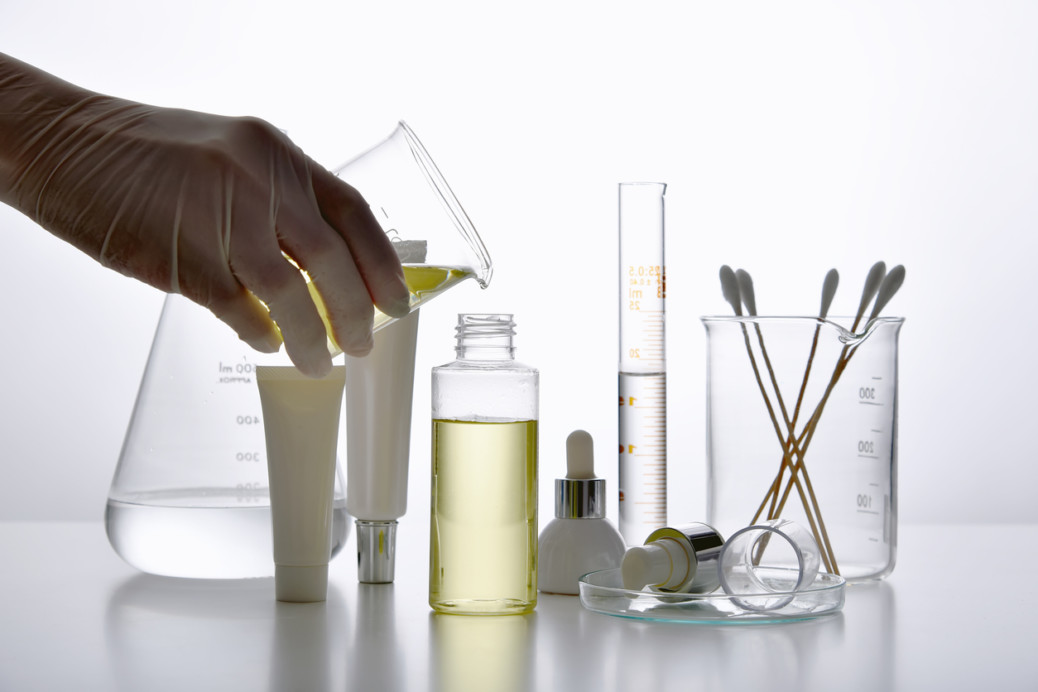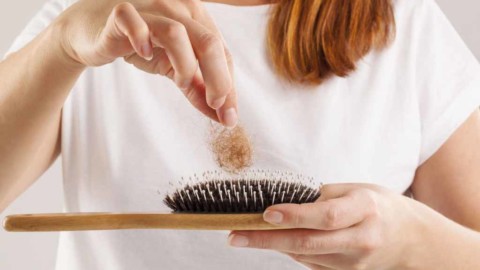Here’s the good news if you’re obsessed with all things beauty: High-end products aren’t necessarily better for you than their cheaper counterparts. Sometimes you’re only paying for fancy packaging and not high-quality ingredients.
The bad news? Many of the cosmetics we use every day are not strictly regulated in the United States and can contain problematic chemicals that have been linked to thyroid issues, infertility and allergies.
Some personal care products are even formulated with toxic compounds that increase your chances of developing breast cancer.
But let’s get one thing out of the way: Using products that contain these chemicals won’t actually kill you, but they could be causing your body more harm than good, especially in the long run.
If you think about it, most of us haven’t really stopped to think if our favorite shampoo is safe for us. While the European Union and Canada have banned a long list of harmful chemicals – more specifically, over 1,000 of them – the FDA has only banned 11. But before you throw away your favorite products (don’t!) take a deep breath. The whole point is to become aware of what you put in your body and become more selective about certain ingredients.
If you’re confused about which chemicals are lurking in your personal care products, do a quick search on the Environmental Working Group’s Skin Deep database and see if any of the ingredients contain irritants, allergens, or carcinogens. In the end, it’s up to you as a consumer to advocate for your health and make sure the products you’re buying are safe. In the meantime, here are the top XX beauty and skincare products you should seriously avoid.
1. Parabens
Commonly Found in: moisturizers, shaving products, hair care, and all kinds of makeup products. You’ll typically find them listed as Ethyl, Benzyl, Isobutyl, Methyl, Butyl, or Propyl.
Every time you step foot at Ulta or Sephora you get bombarded by “paraben-free” products in every aisle. By now, anyone who’s into skincare has heard that parabens are the “big bad guy” in the clean beauty community, (a movement for anyone looking to eliminate toxic ingredients from their beauty regime).
But what are parabens, exactly? Parabens are a type of chemical that helps preserve the shelf life of beauty and health products. They also keep mold and bacteria at bay. Despite the benefit of making your cosmetics last for months or even years, studies have shown that parabens get absorbed through the skin and can mimic human estrogen, which can cause a disruption of the hormone function of the body.
There’s evidence that links parabens to all kinds of hormone-related cancers and thyroid issues. Since the concentration of parabens in most cosmetic products is really small, the FDA considers them safe for use in the United States. But because of the risks associated with parabens, The European Commission (EC) banned 5 different types of parabens for use in cosmetics (more specifically, Isopropylparaben, Isobutylparaben, Phenylparaben, Benzylparaben, and Pentylparaben).
But if you have a bunch of paraben-based products at home, don’t panic. When you hit pan or empty or favorite cosmetics, swap them for an eco-friendly and organic version that has an Ecocert certification.
2. Sodium lauryl sulfate (SLS)
Commonly Found in: foundation, shampoo, toothpaste, bath oils, body wash, bath salts, mouthwash, hair dye, and gel.
One of the most common places where you’ll find Sodium lauryl sulfate (SLS) or its variant, sodium laureth sulfate (SLES) is in shampoos, hair dye, toothpaste, and body wash.
But is this ingredient as bad as the “clean beauty” community claims? Not necessarily. But they do have more cons than pros. These types of surfactants (the main component in most detergents) are often used to get rid of dirt, dead skin cells, and grime from your hair, skin, and scalp. While they’re amazing cleansers, SLS and SLES can be too aggressive on your skin and hair. Surfactants are known to trigger allergies, damage your skin’s natural barrier function, make your hair dry and brittle, cause skin irritation, clogged pores, and even contribute to cystic acne. So if you can, switch to SLS and SLES-free products.
3. “Fragrance” or perfume
Commonly Found in: deodorant, moisturizers, body lotion, conditioner, hair masks, shampoo, and pretty much on most cosmetic products.
If you’re a fan of clean beauty (or at least starting to get worried about what you’re putting on your skin) make sure to avoid any ingredient labeled as “fragrance” or “perfume”.
When it comes to cosmetic chemistry, deciphering which ingredients are actually harmful to your health is really hard. Unfortunately, manufacturers are allowed to use almost any ingredient they want in their formulations. So even if you make a conscious effort to avoid certain ingredients like parabens and sulfates, companies are not required to disclose every single ingredient, since many compounds could be considered “trade secrets”.
This makes it a hell of a lot harder to figure out if a certain product is toxic or could lead to allergies and other health problems. But here’s a head’s up: When you see “fragrance” listed in the ingredients, just know that this is a blanket term that could be hiding dozens of toxic chemicals.
4. Butylated hydroxytoluene (BHT)
Commonly Found in: nail polish, foundation, SPF, makeup remover, exfoliants, shaving cream, lipsticks, moisturizers, nail products, and more.
BHT is a waxy chemical that’s used to extend the shelf life of most of the cosmetic products we use. According to The US Department of Health and Human Services, BHT can be “potentially carcinogenic to humans” and can cause allergies, irritation, and liver cancer in animals.
BHT is banned in Southeast Asia and parts of the European Union for being toxic or harmful. In fact, the European Commission on Endocrine Disruption lists BHT as an endocrine disruptor that has the power to “negatively affect the health of humans and animals.”
While this ingredient is definitely not the friendliest, the amount of BHT in most cosmetic products is pretty low (typically about 0.01-0.1%). What does this mean? That you don’t have to throw away your products, especially if they haven’t caused a bad reaction. But when you finish them, consider switching to BHT-free skincare, nail, makeup, and hair care products to get rid of any questionable ingredients.
5. Formaldehyde (or any ingredients that release formaldehyde)
Commonly Found in: nail polish, eyelash glue, nail hardeners, hair-straightening products, and a whole bunch of cosmetics.
Formaldehyde is a known preservative that makes cosmetics last longer. They also prevent the formation of bacteria and fungus. But even though many companies have stopped using this stuff as research has shown that formaldehyde is a known carcinogenic, it may still be lurking in your everyday products.
But here’s where things get tricky: While you may not see this ingredient listed on a label, there are other chemicals that release formaldehyde. They’re just camouflaged under a different name.
When some hair-smoothing and hair-strengthening products get exposed to heat, they can release formaldehyde gas into the air too, which is why the Occupational Safety and Health Administration (OSHA) recommends hair salons to keep the area well ventilated when working with formulations that include formaldehyde.
So if you want to steer clear of formaldehyde or any of its known releasers, be on the lookout for these formaldehyde releasers: Diazolidinyl urea, Bronopol, DMDM hydantoin, and Quaternium-15.


